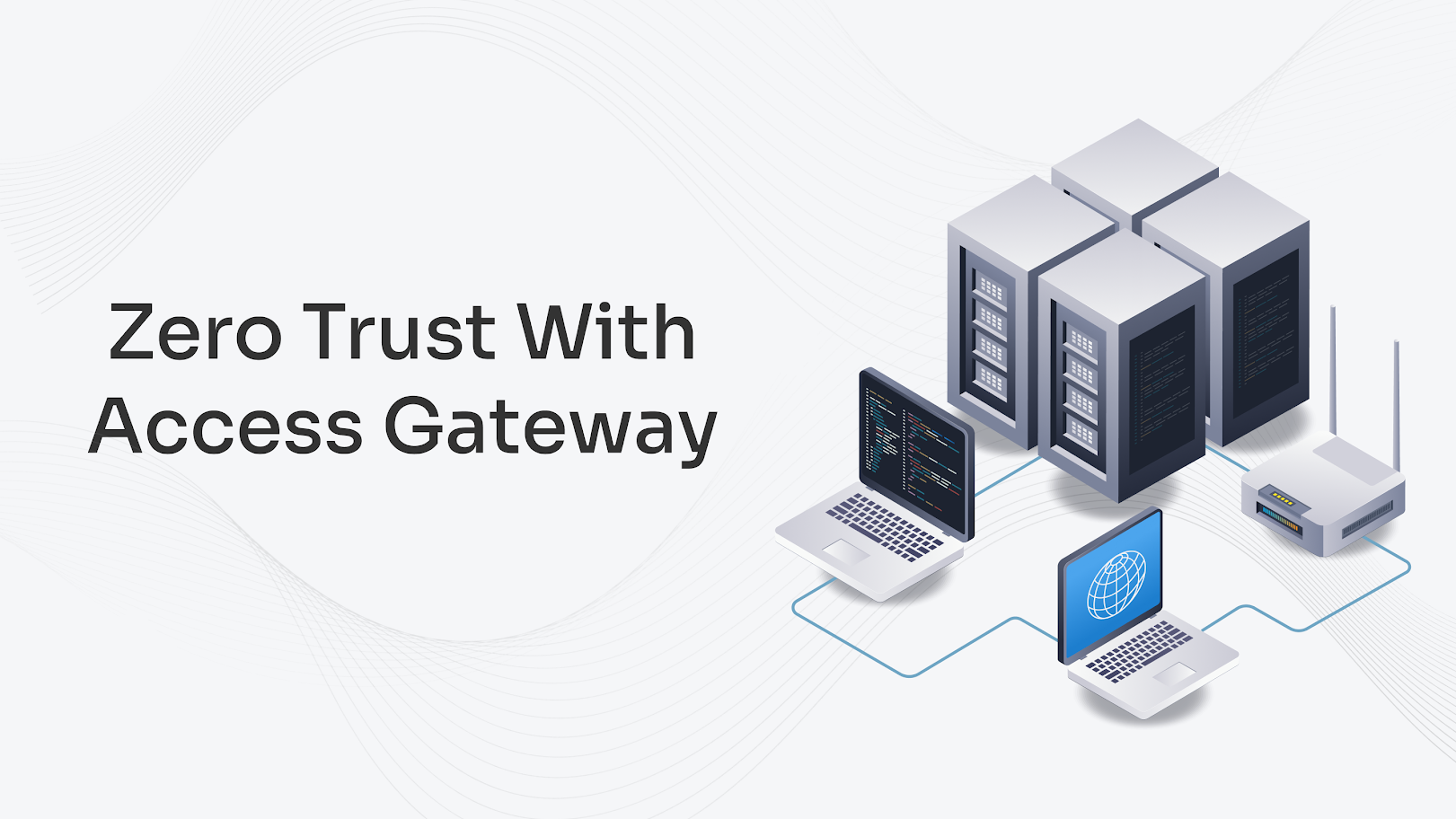Web Access Management (WAM) is a security system that controls who can access online resources and what they can do with them.
These systems emerged in the 1990s, alongside the World Wide Web (WWW). Over the period of years, they have grown significantly and provide secure web access through the integration of Identity and Access Management (IAM) solutions, which help modern enterprises to safeguard their data.
In this blog, we will understand what WAM is, its importance today, and how it works. We will also look at the benefits of WAM and how traditional access management is different from modern access management.
Along with this, we will also look at the trends, real-world cases, and challenges of integrating WAM. Let’s start by understanding what exactly WAM is.
What is Web Access Management (WAM)?
Web Access Management (WAM) is a type of identity management that is developed to restrict users’ access to web resources and applications.
It handles three operations: authentication, authorization, and Single Sign-On (SSO) for better web access control.
Let’s look at these three aspects in more detail. Apart from these operations, WAM also performs session management, audit, and reporting functions. We’ll look at them too.
1. Authentication
Authentication is a process where users’ identities are confirmed by matching their username and password with those stored in directories like Active Directory or Lightweight Directory Access Protocol (LDAP).
Apart from credentials, authentication methods, such as biometric authentication, push notifications, SMS/email-based OTPs, and hardware tokens, can also be used to verify the identities of the users trying to access web apps.
2. Authorization
After a user’s identity has been confirmed, the authorization mechanism comes into effect. This determines which data or resources a user can access within a web application.
This is primarily based on the predefined policies, which guard against unauthorized access by setting up rules for authorization, authentication, and the principle of least privilege. For instance, a policy may state that only managers can access client data.
Some of the policies include Role-Based Access Control (RBAC) and Discretionary Access Control (DAC).
Explore more about Authentication vs. Authorization
3. Single Sign-On
SSO or single sign-on is a core part of the access management software, where users can log into web applications once, with only one set of credentials via an Identity Provider (IDP) and gain access to multiple apps without having to log in repeatedly.
For example, an employee can log into Google Workspace, Moodle, or Notion with their company credentials through IDPs like Microsoft Entra ID or Okta.
4. Session Management
Session management is a part of IAM and a security function of web apps. Here, when the users log in, their login sessions are protected through session management features, such as session timeouts, logout functions, and activity tracking to prevent session hijacking and unauthorized access.
5. Auditing and Reporting
Auditing and reporting play a crucial for meeting compliance requirements and tracking user activities.
An audit trail is a detailed log of all the user sessions and activities, such as the number of logins, access attempts, and a record of who checked what, when, and how.
Reporting creates analytics and summaries from the audit logs, which are later used for meeting compliance, spotting risks, and making risk mitigation decisions.
Why Web Access Management is Crucial Today?
A sudden growth of web apps in businesses, and the use of HR portals, CRMS, and partner dashboards, has turned every web browser into a front door for attackers to penetrate.
Traditional networking methods aren’t capable of handling these attacks, making web access management a crucial tool to manage user logins.
WAM’s unified policies, SSO functions, authorization, and authentication operations help to avoid these attacks in today’s time.
How Web Access Management Works?
Web access management works with the help of certain components and architectural concepts.
Architectural Approaches or Concepts
WAM architecture includes three approaches, which are as follows:
1. Agent/Plugin Architecture
Small software components called plugins or agents are installed directly on each web server. They intercept approaching user requests and communicate with a centralized policy server to check whether access should be granted or not.
This architectural approach permits customized integration with various servers, but it needs management of different plugins for varied server types, which can be complicated.
2. Tokenization Architecture
Here, once the users are authenticated, they are issued tokens that can be presented to the web apps. Tokenization allows data to flow between applications and users, without passing through web access management for each request.
3. Proxy-Based Architecture
Uses a proxy server to intercept user requests before they reach the web server. This proxy deals with authorization and authentication checks centrally, and then forwards valid requests to the application servers.
WAM Components
There are three major WAM components, which are as follows:
1. Policy Server
The policy server is in charge of access control policies and rules, which are based on user roles and attributes. This server makes decisions on whether a user request should be granted or denied (controlling which users can go where and when).
2. SSO for Authentication Service
Single Sign-On functionality allows users to authenticate themselves once through one set of credentials, after which they can gain access to multiple web apps without repeated logins. It basically makes sure that the users are who they claim to be.
3. User Directory
This is a central database, usually Active Directory, that acts like a storehouse for user data (their roles, permissions, and credentials). Admins can easily handle user permissions, access policy enforcement, authentication, and authorization from a centralized database.
Crucial WAM Benefits to Lookout For
- Centralized Access Control: All permissions are governed from a central dashboard, meaning less chaos and more clarity on the WAM operations.
- Stronger Security and Compliance: Enabled policies make sure that the regulatory compliances are met, and these compliances are HIPAA, GDPR, HIPAA, etc.
- SSO Benefits: SSO solutions improve security and workflows; users simply log in once with their IDP credentials, and they get access to a myriad of applications.
- Audit-Ready Reporting: All user activities are logged and reported to meet compliance, detect risks, and make informed decisions.
WAM helps enterprises to minimize breaches, amplify user experience, and ensure compliant access. It is a win for security, productivity, and enterprise reputation.
Traditional WAM vs. Modern Access Management
| Elements | Legacy WAM | Modern Access Management |
|---|---|---|
| Mode of Deployment | On-premises | On-premises, Cloud, and hybrid modes |
| Security Standards | Limited to password-based login, and lacks MFA standards | Supports passwordless authentication, adaptive security, and MFA |
| Cost | Expensive due to high maintenance costs, due to outdated and on-prem settings. | Inexpensive as built on the cloud, lowering infrastructure costs. |
| App Integration | Restricted to web servers | Supports mobile, hybrid, and cloud platforms |
| Scalability | Hard to scale | Easy to update and fast integration, so easy to scale |
Modern Trends in Web Access Management
Today’s WAM solutions are evolving rapidly to meet sophisticated threats and new business models:
1. Zero Trust Security
Zero Trust Architecture (ZTA) is a security concept where the principle of ‘never trust, always verify’ is applied.
The Zero Trust WAM replaces the traditional perimeter-based WAM, where it is assumed that the users are safe once they’re inside the network, with constant, contextual verification for each request to web apps.
Zero Trust WAM decouples access from the network and focuses security around devices, identity, and apps.
2. Passwordless Authentication and MFA Solutions
WAM is integrated with Identity and Access Management (IAM) solutions like Multi-Factor Authentication (MFA) and passwordless authentication to redefine how WAM protects apps and users from potential threats.
Instead of relying on passwords (which are subject to brute-force attacks), web applications can be made more secure with MFA methods such as push notifications, hardware tokens, biometric authentication, magic links, and more.
3. AI-Driven Adaptive Access
AI-driven adaptive access in Web Access Management (WAM) leverages artificial intelligence and machine learning to continuously evaluate real-time contextual data and user behavior for smarter, dynamic access control decisions.
Modern IAM: A Super Smart Solution for WAM
Modern IAM solutions address all the pain points of the traditional WAM, such as high cost of maintenance, limited to on-premise, and a lack of support for passwordless authentication and MFA.
Modern identity and access management is created for cloud, on-premise, and hybrid modes of deployment, and they’re also mobile-friendly.
Modern IAM solutions are considered a go-to option because:
- They support compliance regulations, user experience, and risk management.
- They help to monitor every access for suspicious behaviors and generate real-time analysis.
- IAM solutions provisions and deprovisions users instantly for any resource or app.
So, basically, modern IAM extends WAM reach and depth for a smarter and more holistic enterprise protection.
Key Use Cases of WAM
- Internal Employee Portals: WAM acts as a unified access for HR, intranet, payroll, and business applications.
- Partner/Vendor Access: Limited and secure access to specific resources without jeopardizing the core systems.
- Hybrid, Cloud, and On-Prem Environments: WAM systems act as a unified security layer that bridges these diverse environments.
Challenges of Implementing WAM
- Complex Policy Setup: Setting up detailed policies for varied user groups and confidential assets can be time-consuming, plus there could be chances of errors.
- Integration with Legacy Apps: Legacy web apps can lack compatibility with modern web access management systems, needing substantial customization.
- Limited Protocol Support in Conventional WAM Systems: Legacy WAM may not support protocols such as OAuth, SAML, OpenID Connect (OIDC), or RADIUS, which can limit integrations and updates.
Ample awareness and planning can help businesses circumvent these WAM challenges, especially by choosing agile, next-gen IAM platforms.
Conclusion: Why Upgrading Your WAM is Essential
Web Access Management is the backbone of enterprise security from external and internal threats, alongside meeting regulatory compliance requirements. Organizations using outdated WAM are at risk of exposing themselves to cyberattacks and inefficiencies.
So, modernizing WAM by adopting MFA, SSO, access gateway, adaptive authentication, and the entire IAM suite is not just a technical upgrade. It is a strategic need for safeguarding data, reputation, and business continuity.
Discover how miniOrange can modernize your Web Access Management, and connect with us to know more about the IAM products offered by us. We also offer a 30-day free trial, so you know which product suits you the best.
FAQs
What do you mean by Web Access Management?
Web Access Management (WAM) is an identity management solution that authenticates and authorizes users to access web applications.
What is the use of WAM?
WAM is used to control access to the web resources, including strengthening defenses, including data integrity, IP filtering, auditing, reporting, and verifying users.
What is the history of WAM?
WAM was developed in the 1990s, in parallel with the World Wide Web (WWW), and it has grown ever since. It was made for the sole purpose of simplifying and securing web access.





Leave a Comment